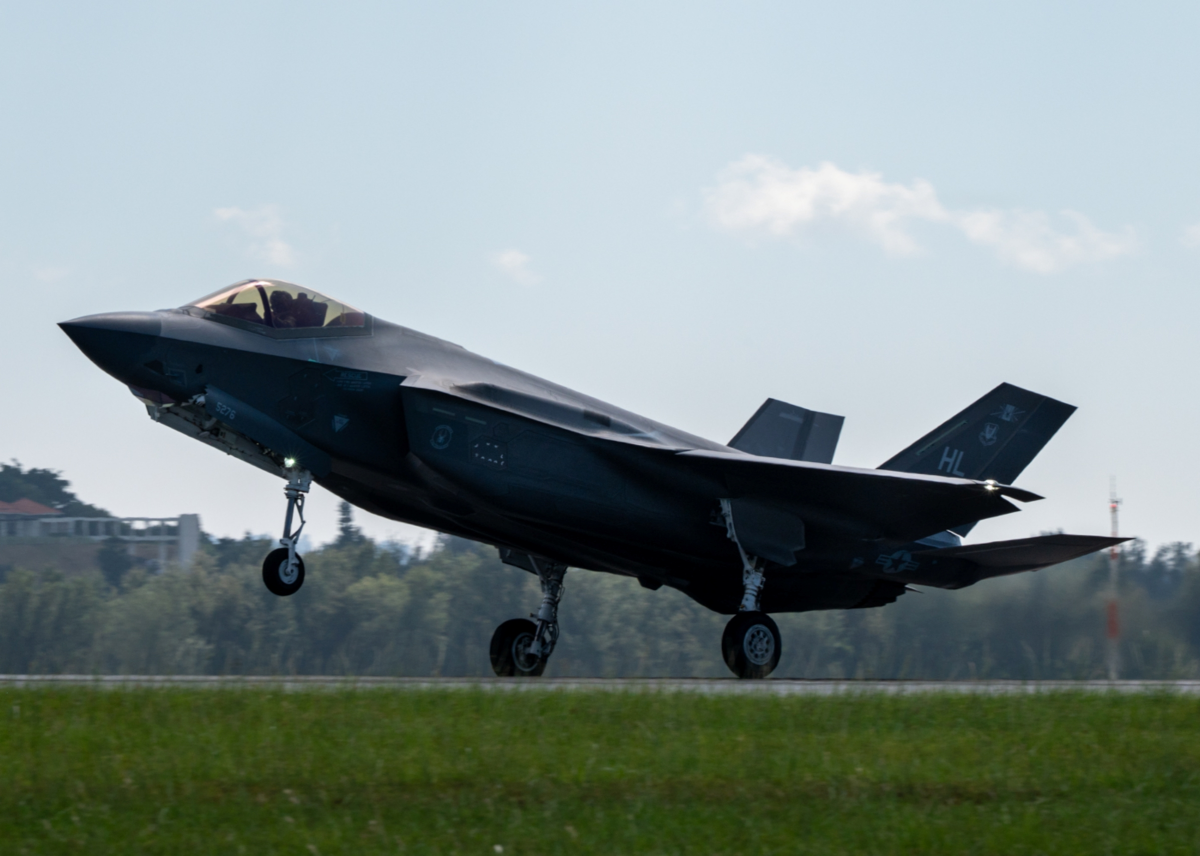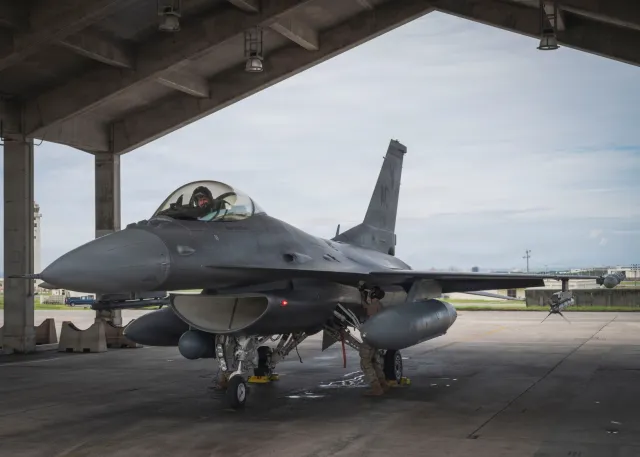
The United States has reinforced its fighter aircraft presence at a key air base in Japan amid rising tensions between the treaty ally and China over a potential war in Taiwan.
In two press releases on Friday, the U.S. Air Force‘s 18th Wing, the host unit at Kadena Air Base on Okinawa Island in Japan, announced the recent arrival of F-35A Lightning IIs and F-16C Fighting Falcons as part of the base’s continuous fighter jet rotations.
The Chinese Foreign Ministry did not immediately respond to a request for comment.
Why It Matters
Serving as the closest U.S. air base to Taiwan, about 370 miles away, Kadena Air Base is set to receive the first of 36 F-15EX jets to replace 48 aging F-15C/D jets in spring 2026. During this transition period, it maintains a rotational presence of fighter aircraft by temporarily hosting jets assigned to other bases to ensure continued air power.
Japanese Prime Minister Sanae Takaichi said earlier this month that Japan could deploy its military if China moved against Taiwan—a self-governed island long claimed and threatened by Beijing—and the U.S. military came to the island’s aid. The remarks drew a fierce response from China, which accused the U.S. ally of “playing with fire.”
What To Know
The first group of Kadena Air Base’s air power reinforcement consisted of F-35A jets, which arrived from Hill Air Force Base in Utah on October 7. They joined another group of F-35A jets from Eielson Air Force Base in Alaska, Stars and Stripes reported.
The stealth jets, assigned to the 4th and 356th Expeditionary Fighter Squadrons, have “unmatched situational awareness with exceptional agility and multirole capability,” the 18th Wing said, adding that they could strengthen U.S. air power in the Indo-Pacific.
The second group is made up of F-16C jets assigned to the 119th Expeditionary Fighter Squadron at Atlantic City Air National Guard Base in New Jersey. The 18th Wing said their arrival on October 18 marked the completion of the latest fighter aircraft rotation.
While F-16 jets lack the stealth and advanced sensors of F-35A jets, their “agility and combat-tested versatility” makes them a vital complement to Kadena Air Base as they operate alongside U.S. and allied forces to hone tactics for real-world contingencies.
The 18th Wing said modernizing air power in the Indo-Pacific remains a top priority for the Pentagon, with the rotation of advanced fighter jets enabling Kadena Air Base to be ready to respond decisively, deter aggression and shape the future of air dominance.
The previous fighter aircraft rotation on Japan’s southwestern outlying island consisted of two F-35A squadrons and one F-15E squadron, which deployed at Kadena Air Base between early April and late October, according to Stars and Stripes, citing the 18th Wing.

The U.S. military has deployed all three variants of the F-35 jet in Japan. The F-35B and F-35C jets—designed to operate from naval ships, including aircraft carriers—are permanently based at Marine Corps Air Station Iwakuni on the main island of Honshu.
What People Are Saying
U.S. Air Force Lieutenant Colonel Adam Thompson, commander of the 4th Expeditionary Fighter Squadron, said: “Our relevance here is to enhance a fully integrated, reliable force prepared to respond whenever and wherever needed.”
U.S. Air Force Lieutenant Colonel Joseph Curran, commander of the 356th Expeditionary Fighter Squadron, said: “This deployment expands our operational reach and provides our Airmen valuable opportunities to train with key allies and partners.”
U.S. Air Force Lieutenant Colonel Eric Emerson, commander of the 119th Expeditionary Fighter Squadron, said: “Our deployment to Kadena will enhance the Air Force’s ability to respond across the Indo-Pacific with speed and precision.”
What Happens Next
The continuous deployment of fighter jets at Kadena Air Base could signal the strength of the U.S. Air Force and Washington’s security commitment to Japan amid China’s growing force buildup and expanding military presence.
